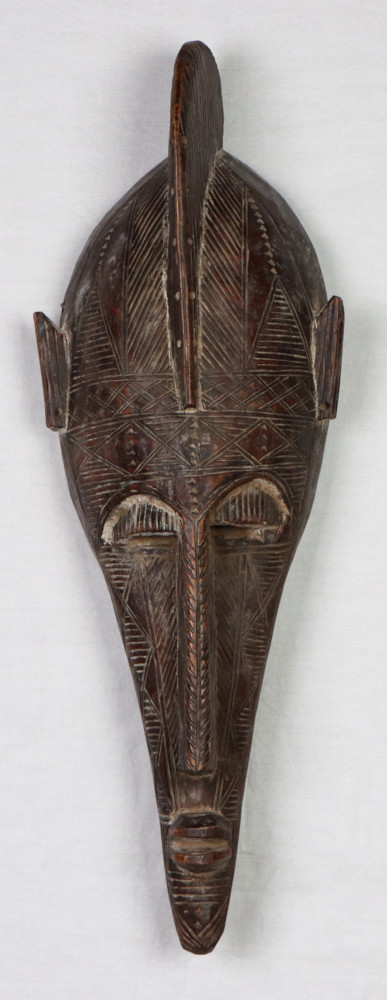While many of Sadigh’s items are said to be complete forgeries created by Sadigh and his associates, some may be a little different. Sadigh stated in his guilty plea that his collection mainly was mass-produced and then made to look older using artificial aging techniques. We believe that the African masks that you see in this section are mass-produced but by different means. Tourist art is mass produced and made not only for sale to tourists but also to appeal to outside audiences. Frequently tourist art will go through an intermediary to spread the art to those further audiences, who will market (and sometimes edit) the art to appeal to a broader spectrum. This is what we believe happened with these masks. They were simply tourist art that Sadigh bought, artificially aged, and then sold as something completely different. The artificial aging is especially alarming, considering these pieces are marketed as contemporary 20th century art. This is where the line between forgeries and tourist art gets foggy. If Sadigh had marketed these as tourist art, it would have been a different story, but in the act of selling it as the real deal, he has turned this innocuous piece into a fraudulent artifact. Sadigh sold these artifacts as culturally significant, yet they are devoid of that meaning. The fact that the original artist likely had no intention of marketing this artifact as a cultural item means very little in the aftermath. Can we really consider tourist art to be “real,” and where along the process did it become “fake”? This is what we hope to answer.
Click on the images at the right to read our reviews of the objects.






